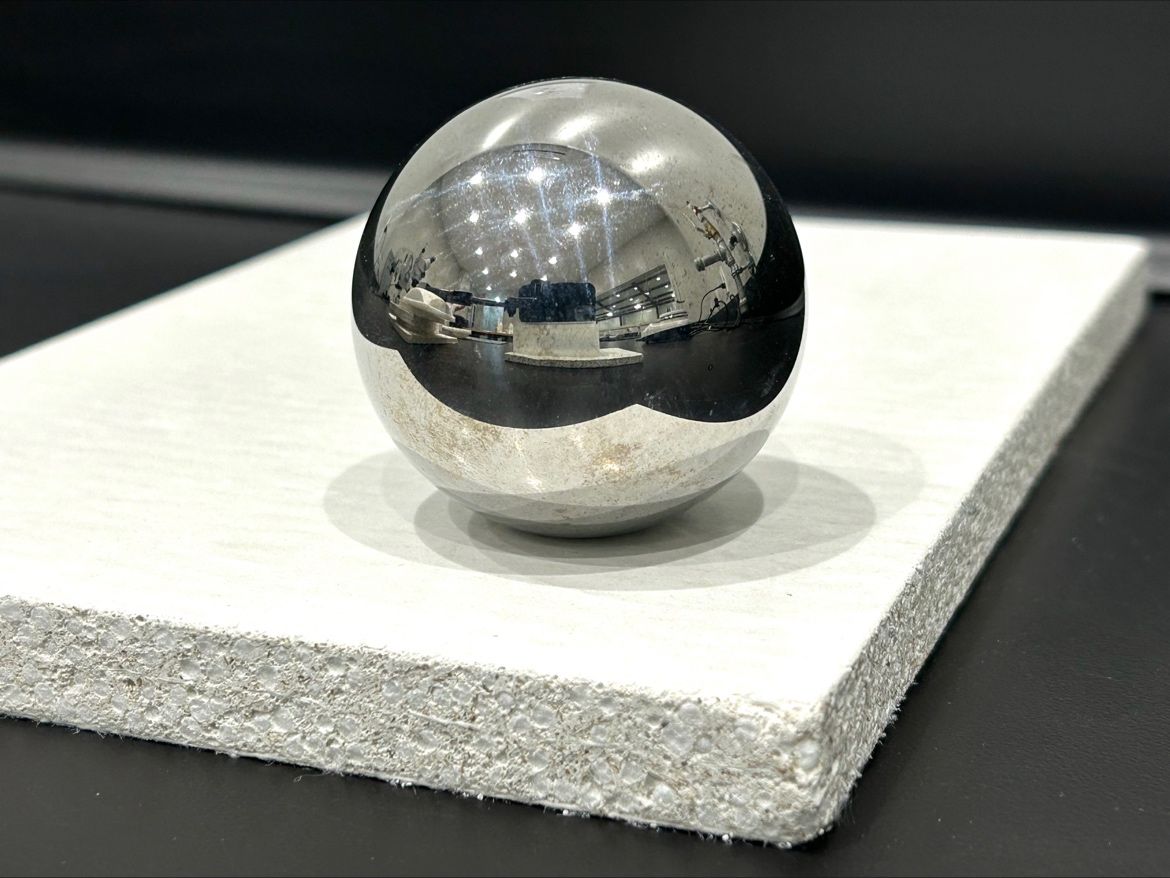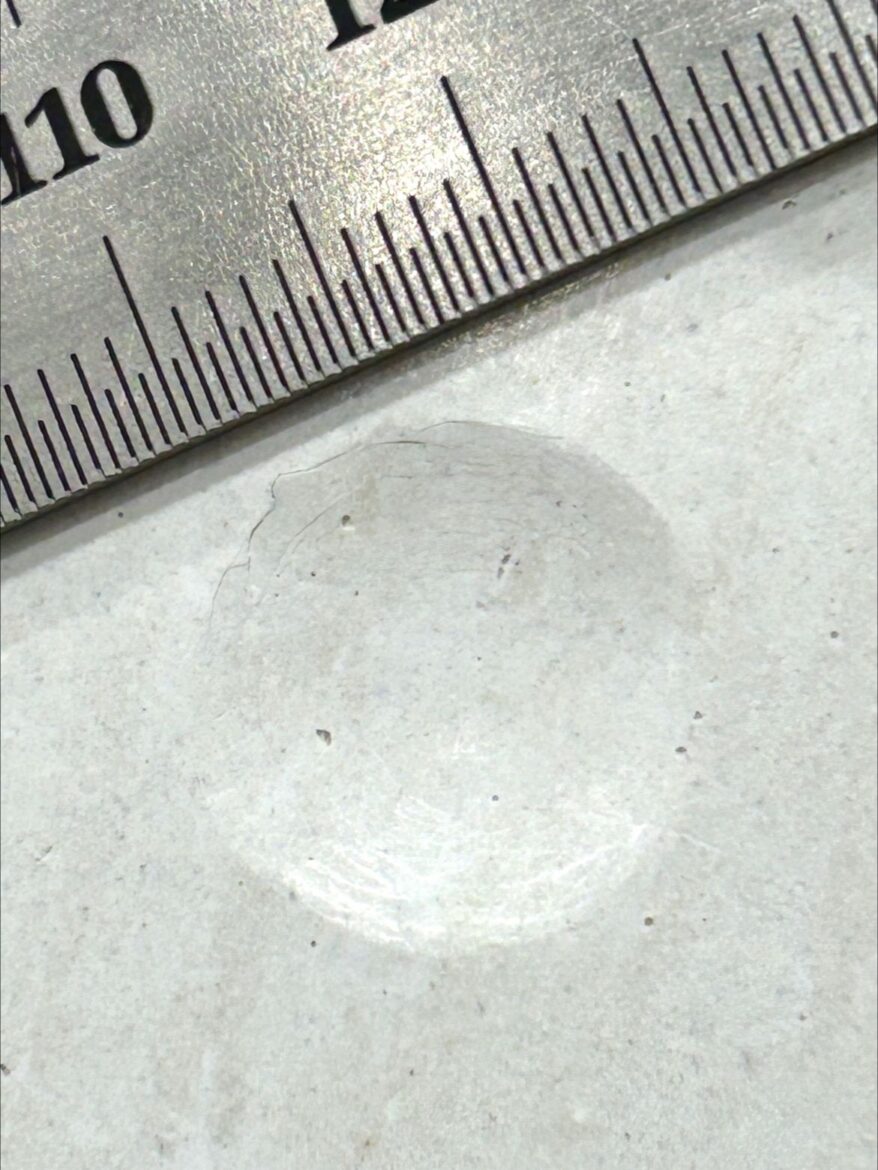Tags: #mgo impactresistance impacttesting magnesiumoxide producttesting roguetesting

This method has been used for decades for evaluating impact resistance of wood panels and other building materials. It involves a 2-inch steel ball weighing 1.18 lbs (535 g) dropped from 1 to >12 inches.
For wood-based materials, the ball is dropped at increasing heights, starting at one inch and increasing by one inch until failure is noted on the underside (ASTM D1037) For MgO, the ball is dropped at a single height of 12 inches (AC386). Note that kinetic energy – or the potential to do damage – is a function of mass and height. So height matters.
No details are provide as to performance criteria. What’s a failure – a crack? An indentation? What are the limits of these cracks and indentations? And at what magnification are such potential effects assessed? AC386 simply states “samples shall show no damage to top or bottom surfaces at a 12 inch drop”.
Our testing of MgO evaluates impact resistance at 12 and 24 inches with the effects examined at 10x-40x magnification of both panel faces. The increased rigor at two feet is a telling differentiator. But even at 12 inches (images 2-3), inferior boards show cracked crater edges and hairline cracks at the front or underside.
Just another example of the importance of greater rigor and improved resolution in product testing. Add weathering/pre-conditioning to the equation and you have the basis for enhanced testing and greater predictive value.
And then there’s the large missile impact test … can’t wait!


